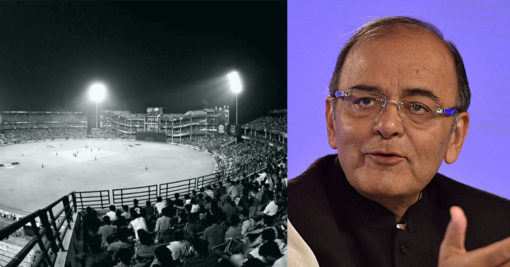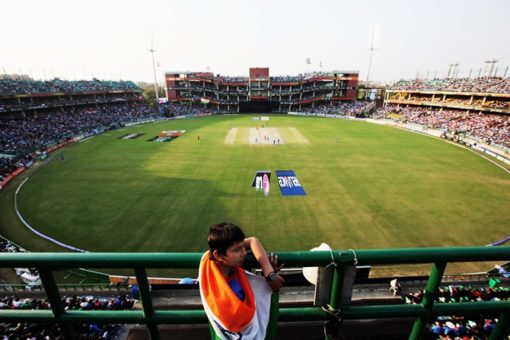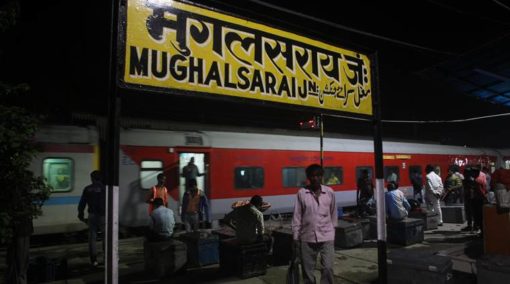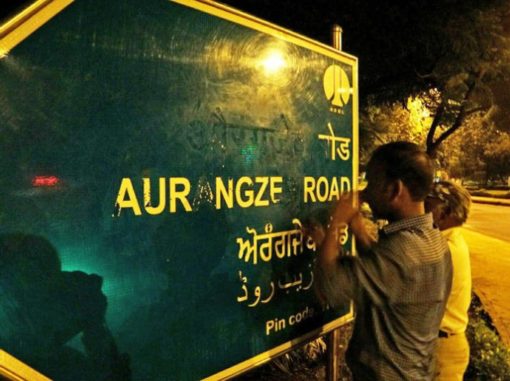
“Delhi's iconic Feroze Shah Kotla stadium to be renamed as Arun Jaitley stadium. Not taking anything away from Arun Jaitley, but I hate this practice of renaming places. It's like trying to erase a slice of history from our lives,” said a twitter user about the recent decision to rename the Feroze Shah Kotla stadium.
The Delhi and District Cricket Association (DDCA) has decided to rename the Feroz Shah Kotla Stadium as Arun Jaitley Stadium after the cricket body’s former president. The stadium was named after the Sultan of Delhi, Firoze Shah Tughlaq since it was built in 1883. Feroze Shah Kotla stadium (being near the Kotla fort), is the second oldest international cricket stadium still functional in India, after the Eden Gardens in Kolkata. Justifying the act, Association president Rajat Sharma said, "It was Arun Jaitley's support and encouragement that players like Virat Kohli, Virender Sehwag, Gautam Gambhir, Ashish Nehra, Rishabh Pant and many others could make India proud."
The stadium's capacity is currently at over 40,000. It has played host to 34 Test matches, 25 ODIs and 5 T20Is. Besides that, it also hosts matches for the Delhi cricket team as well as the Indian Premier League (IPL) franchise Delhi Capitals. The move for this hasty re-naming was widely criticised by netizens who took to social media to raise their concerns over changing historically relevant and popular symbols that make up the heritage, culture and demography of the city.

Feroze Shah Kotla, a wider area, was built in the 14th Century. The term Kotla translates into citadel. Historian Rana Safvi, who is based in Delhi city, notes that the citadel was part of Firozabad, the fifth city of Delhi, which was built by Firoze Shah Tughlaq. The fortress of Feroz Shah Kotla (literally meaning citadel) stood like a crown to the city, one of the seven that have come to comprise Delhi over time.
Explaining that Firozabad was the first city built on the banks of a river, Safvi mentions how the Yamuna flowed beautifully through the city at the time. The citadel was meticulously planned and became a prototype for many forts built later.
In the last few years, it has become a trend to portray the rule of Mughals and Islamic emperors as a reign of tyranny devoid of any shades of grey. The tendency is to portray them in these sharp and historically unrealistic binaries is not just crude. It is part of a political agenda. Hence, in this case too, some want to invoke the name of Feroze Shah, in popular imagination to evoke a sense of tyranny and injustice. Shah’s brother Mohammad Bin Tughlaq is known for several maverick governance decisions –not unlike many taken in the modern-day era.
Twitter users from the bhaktology mould gloated:
Ghiyasuddin, Mohammad and Firoze Shah were the three main stalwarts of the Tughlaq dynasty. Amongst the, history tells us, Firoze Shah was both more energetic and prolific. His inclination towards building public and religious edifices can be evidenced with his credit of building fifty dams and embankments, forty mosques, thirty Madarsahs, twenty Khanqahs, hundred Kaushaks, twenty Rabat, about a hundred cities, five tanks, ten hospitals, one hundred fifty tombs, three baths, one hundred fifty towers, one hundred fifty Bridges and gardens beyond calculation by the contemporary historians (Alvi).
Researcher Asif Ali notes, “Though these figures seem exaggerated but his contribution as a builder to the mosque architecture is remarkable in the history of Islamic architecture in India which can be evidenced by five mosques of his period in Delhi during his reign. Besides building many mosques Firoz Shah also took interest in the conservation of many buildings. For instance the uppermost storey of Qutub Minar, which was damaged due to lightening, was rebuilt by him. Unquestionably the development of mosque architecture in India reached at its zenith during Mughal period but its roots were laid in Tughlaq period and especially during Firoze Shah’s reign.”
Safvi feels that a better tribute to Jaitley could have been creating something new. She says, “I personally feel that would have been the best homage. But, renaming seems to be an established pattern,"
Post 2014 India: A re-naming spree
In August 2018, the BJP government in its first term and close to the election, changed the name of the historic Mughalsarai Junction Railway Station in UP after the right wing ideologue Deen Dayal Upadhyay, evidently because of the reference to the Indian Muslim Mughal dynasty.

In May 2015, many street signs especially in New Delhi, namely the Aurangzeb Road, named after the sixth Mughal emperor, were painted black by Shiv Sena Hindustan, a Hindutva outfit. Later, in the same year the government changed the name to APJ Abdul Kalam, the ex-president of India.
In April 2016, city of Gurgaon was renamed to Gurugram after Guru Dronacharya, a mythological figure who favoured upper caste men.
In September 2018, the BJP government also proposed to rename airports in the towns of Bareilly, Kanpur and Agra. The suggested new names were Nath Nagri, after the Hindu Nath sect (to which UP CM Yogi Adityanath belongs) and Deen Dayal Upadhayay.
However, Rizwan Ahmed, a scholar at Qatar University, points out,“renaming cities is not an act that is credited only to the BJP”. Much before BJP, many cities in India were renamed. In 1995, names of the cities of Bombay, Bangalore, and Calcutta were “restored” to their indigenous versions – Mumbai, Bengaluru, and Kolkata respectively – to emphasize its independence from Britain and reject the linguistic symbols left over from the colonial era. The names of the cities Cawnpore and Jubblepore were also changed to Kanpur and Jabalpur to reflect native spelling and pronunciation. Though renaming has been practised in many cities across the world, almost always it is a politically loaded act. Ahmed says, “Place names are an important element of a country's cultural landscape, as they naturally document and reflect a locality's heritage and identity. Changing them is often seen as a re-writing of history. Renaming, therefore, is always a hotly debated issue”.

He notes that renaming seems a lot more acceptable when it is done to restore the names to their original or native names in defiance to the colonial rule. However, he says, “when it is done solely to privilege one of the many available readings of a place's history and identity, it becomes a divisive force, helping to accentuate political, social and historic divisions within a community.”
In today’s India, there is an increasing attempt to show Muslims as invaders and paint the picture of British colonial rule and ‘Muslim rule’ as alike and ‘exploitative’. This is reflected in PM Modi’s statement that India is troubled by “1200 years of slave mentality”. Not only does this show a poor understanding of history: collapsing 200 years of British rule with those of the Mughals shows a scant understanding of both history and colonialism. While the British used India solely as a colony, the Mughals, even while being part of a feudal era and remaining rulers, generated wealth that remained within. The multifarious and layers of cultures borne in the Mughal period, too is legion. Scholars have pointed out that even kings like Aurangzeb, who were, “not much different from other kings”, destroyed some temples but simultaneously protected many others, demonstrating that his actions were not driven by "cruelty" or a desire for religious oppression, but political considerations.
In a similar vein, to rename the Feroze Shah Kotla stadium, raises questions on the intentions of the government. Firoze Shah, as is evident, was a connoisseur and lover of architecture, art, sculpture and more. This identity is part of our multi-layered past. He was a man with an extraordinary vision of public buildings and construction. At a time when we have a poor public aesthetic –especially in the concrete, PWD structures springing up in urban centres, this deep sense of the aesthetic and conservationism needs special appreciation.




